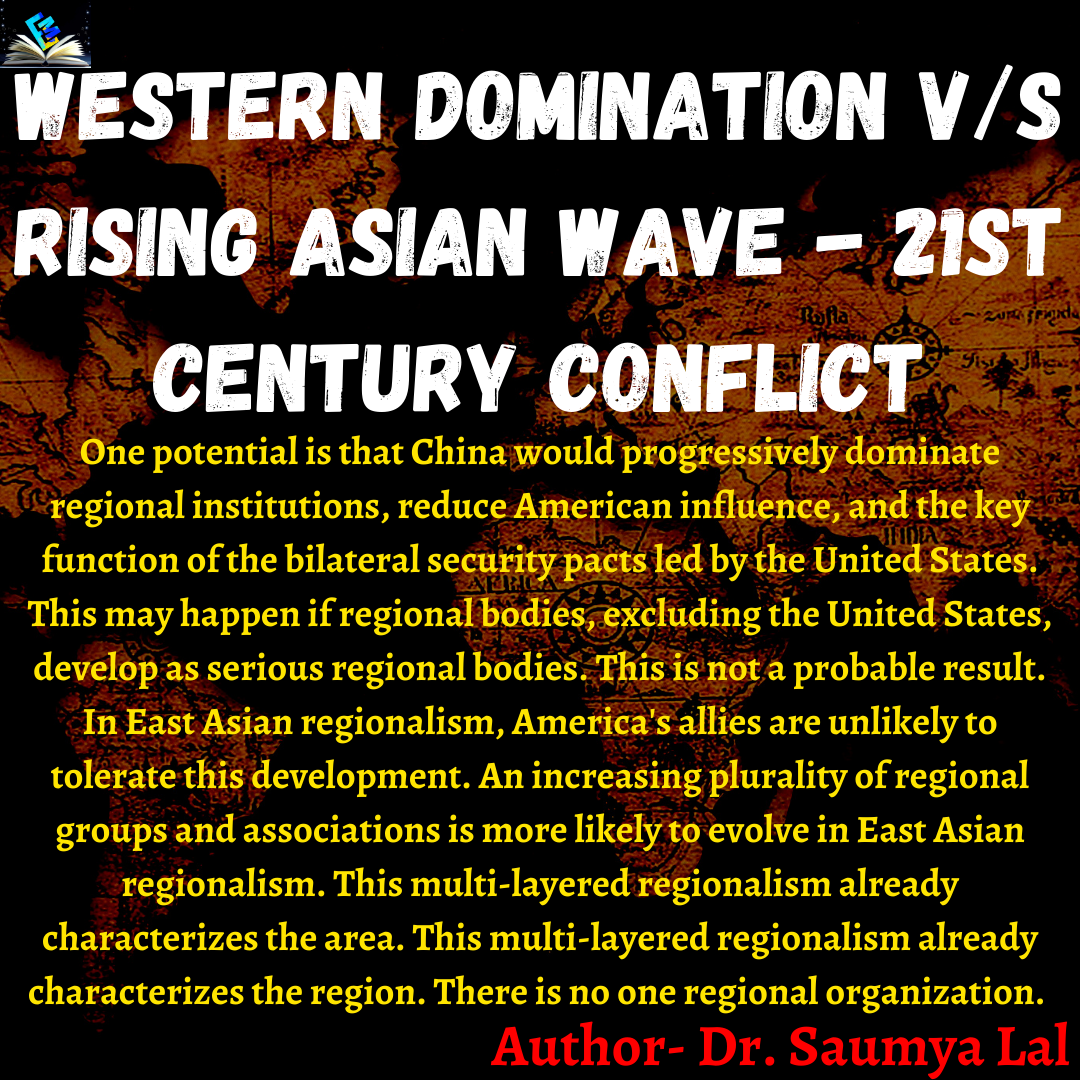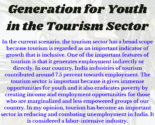
Western Domination v/s Rising Asian Wave | 21st Century Conflict
Author: Dr. Saumya Lal
Asia has various alternative paths—something more beneficial to the US and others less favorable. One potential is that China would progressively dominate regional institutions, reduce American influence, and the key function of the bilateral security pacts led by the United States. This may happen if regional bodies, excluding the United States, develop as serious regional bodies. This is not a probable result. In East Asian regionalism, America’s allies are unlikely to tolerate this development. An increasing plurality of regional groups and associations is more likely to evolve in East Asian regionalism. This multi-layered regionalism already characterizes the area. This multi-layered regionalism already characterizes the region. There is no one regional organization.
Too many diverse and complicated issues need a variety of regional methods and clusters. East Asia won’t go down the road of Europe. The US and China will very definitely fight for leadership in the Asian region and battle for it. The area is decentralized and complicated. It will neither be a pure hegemonic regime or a conventional power system equilibrium. It maintains and develops both features.
The task for the US is not to obstruct Chinese membership, but to assist define their conditions and seek chances in the course of strategic negotiations. In exchange for Beijing’s acceptance and accommodation of Washington’s fundamental strategic concerns, including maintaining a dominant security provider in East Asia, the United States is negotiating major business with China by providing it with status and position in the regional order.
The US will aim to establish a multilateral institutional structure in East Asia that will link and bind China by concluding this strategic deal. That is, of course, just how the United States built and operated inside regional and global economic, political and political levels, in the decades after World War II and security agencies Are making themselves more predictable and accessible to others and the reduction of incentives. The United States must otherwise fight or undermine the construction of Coalitions countervailing.
It is not merely a geopolitical strategic strategy of hegemony or power balance in this sense. Rather, the concept of order, identity, or community is permeated by particular American ideas. This is a combination of liberal and realistic thought. During the long-term US hegemonic leadership, America has led East Asia and continues to inform Washington’s attempts today to remain linked to East Asia and to set Chinese terms.
The United States desires an open and structured regional system based on broadly agreed political and economic laws and values. Overall, both the US and China have reasons to curb their competition in geopolitics. They are sure to fight and compete and try to be the region’s top state. But US efforts to restrict China and Chinese efforts to drive Unit-funded states out of the area will both be schemes for self-defeat.
The most optimistic picture of China’s peaceful growth and controlled US-China competition in the Asian region is that Peking sees China’s peaceful progress as an obstacle to the American-led liberal international order. The area progresses to a post-hegemonic system more characterized by power balance and rationality, Great power politics return. But the region’s extent to a more dangerous situation in which security rivalry with the Cold is limited there are restrictions. Geopolitics of war is going to dominate America’s Great East Asian Strategy. In part, it wants to provide China with an upward counterbalance. However, the Simply power balance and is not the essential aspect of this approach. Construction of the alliance. The US is trying to bring China into the liberal. At the same time, the world order tries to curb China’s strength and influence.
Only many years ago, many Americans still expected that there would be a major challenge for U.S. dominance in the Western Pacific or that China would reconcile itself to an active part in the liberal world system. The common opinion was that China was looking for an increased regional role and a diminished US influence, but that all global goals would be deferred to the far future. But now, signals are obvious and everywhere that China is preparing to oppose America’s global leadership.
The naval shipbuilding scheme is in place, which between 2014 and 2018 sails more ships than combined in German, Indian, Spanish and British ships. Peking is committed to dominating the high-tech industries which will decide future economic and military power distribution. A battle is underway to dominate the vital waterways off the coast of China and plans to construct a further network of bases and logistics installations are reported.
Systemic attempts are being made to improve ways for turning economic influence in the Asia-Pacific and beyond into economic coercion. It is difficult to understand the exact goals of opaque authoritarian governments. And the ultimate expressions of hostile intent are dangerous because they might lead to fatalism and self-fulfillment. The two of us have distinct priorities as to whether US-China relations remain stable and fruitful. However, to question not if China seeks (and will eventually strive) to position itself as the world leader and to understand how it may achieve this aim needs some voluntary blindness.
It demands no matter how instinctual or confrontative they might be, the American strategy’s architects must straightforwardly deal with this question. If China’s intended destination is real superpower status, there are two ways to attempt and get there. The first is the one US strategists have highlighted so far (as far as Chinese global aspirations have been recognized). This path passes via China and the Western Pacific in particular. The focus is on creating regional supremacy as a springboard for global influence, and the route the USA previously walked seems very familiar. The second route is quite different since its historical strategic and geopolitical norms seem to be defied.
The natural end of all deviations, Asia’s ascent is natural and one day it will take place. The world’s largest economy is China in purchasing power parity (PPP) terms, the second is the USA, the third is India, and the fourth is Japan. Asia is the obvious winner out of the top four. Although economic power shifts to Asian countries presently, the West rejects this transition. In many needless wars, the West continues to interfere. These needless initiatives have sapped Western society’s spirits and resources. A strategy of 3M, which is minimalistic, multilateralist, and Machiavellian, is needed to avoid the West from losing it.
Mail us at info@edumound.com






